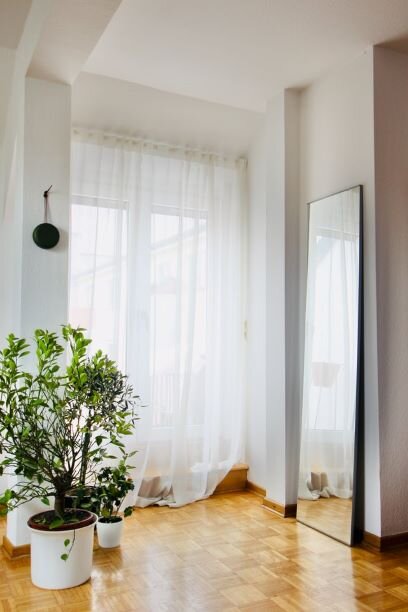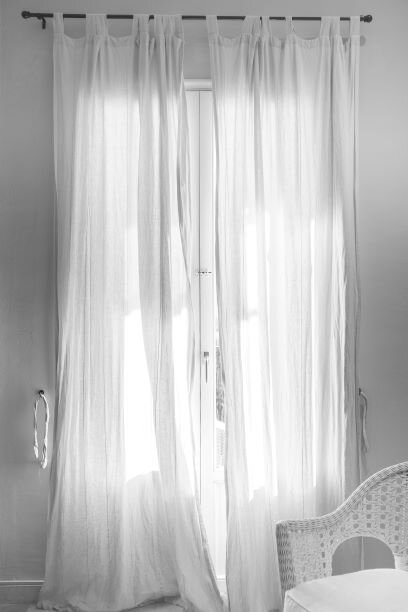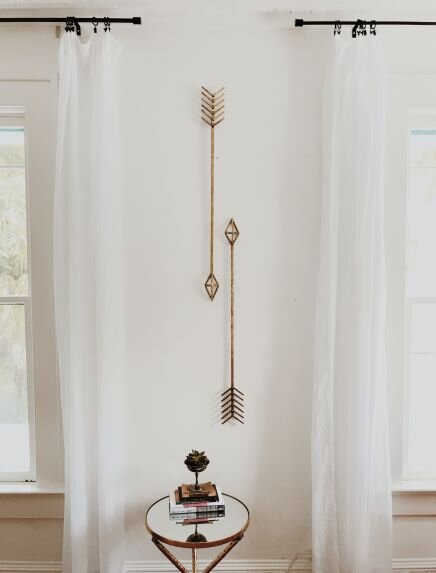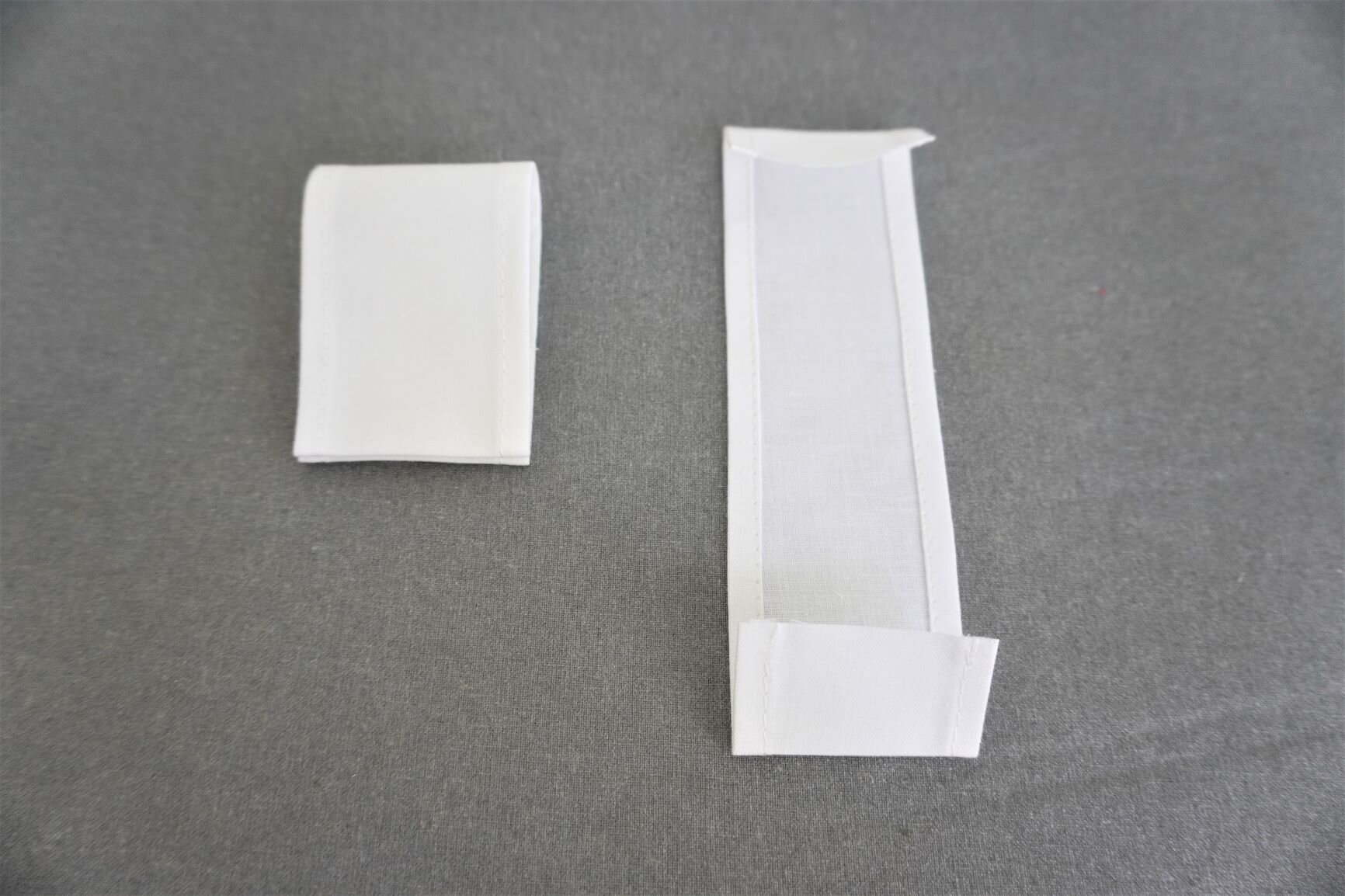Have you ever wondered whether you can use muslin fabric to make curtains? You definitely can use lightweight muslin fabric to make some lovely, fresh white curtains. These are the types of curtains that you often see in photos of country cottages, like so:
All you have to do is make sure you use lightweight cotton muslin that is bleached and has a soft drape. This fabric is typically quite cheap (around $4-9 per yard) and easy to cut and sew. For example, I would recommend buying a bolt of this lightweight bleached cotton muslin to make curtains out of – it has a lovely drape and comes out to only about $3.10 per yard ($77 for 25 yards).
This particular bolt is 44 inches wide, which I think is the right width for most standard-sized windows, but this muslin fabric also comes in a variety of other widths (36”, 90” and 107” – see all widths here) so save yourself some time by buying the fabric in the width that is closest to the width you want your final curtain to be. That way, you won’t need to finish the edges of the sides of the curtain, because the selvage of the fabric will run down either side of the curtain.
Another perk of using muslin to make curtains is you can use any leftover muslin to line your future sewn garments. Lightweight muslin makes perfect lining fabric for casual summer dresses made out of cotton or linen, because this cotton fabric is breathable and keeps the wearer cool even in soaring hot temperatures. (Check out my post on using muslin as lining fabric here.)
So without further ado, here are the steps to make your own DIY curtains using muslin fabric:
Instructions
1. Measure the distance from the floor to curtain rod. Add two inches to this distance, then cut your fabric to this length. This will yield one panel.
2. Turn the bottom hem in ½ inch and press. Turn the hem up another 2 ½ inches and topstitch down to secure the hem in place.
3. Turn the top edge of the curtain panel in ½ inch and press. Turn the top edge down another 1 ½ inches and topstitch down to secure the edge in place.
4. To make the hanging loops, cut strips of muslin that are 8 inches long by 3 inches wide. The loops will be spaced 4 inches apart. To figure out how many loops you need, divide the width of your fabric by 6, then add 1. For example, my fabric is 45 inches wide, so I need 45/6 = 7.5, which rounds up to 8 loops per panel.
5. Finish the long edges of the loops by turning the fabric ¼ inch in from the edge, then turning it again another ¼ inch. Sew in place. Repeat with the other long edge of the loop.
6. Turn up the short edges of the loops 1 inch and press. Fold the loop in half so that the wrong sides face each other and the turned up edges of the loop are together.
7. Starting at one end of the panel, position the loop on the top edge of the curtain so the loop extends 1 inch into the curtain panel. Pin in place. Repeat with other loops, leaving 4 inches in between each loop. Work towards the middle, then stop and repeat the process starting from the other end of the panel. Depending on the width of your panel, you may find that the two loops in the middle are a little less or a little more than 4 inches apart – that’s perfectly ok, as long as the loops on the two sides of the curtain are symmetrical.
Pinning the loops in place
8. Once all the loops are pinned in place, topstitch down the entire top edge of the curtain panel. This will sew the loops in place and also ensure that the top edge of your curtain stays nice and crisp.
9. Next, topstitch down the loop edge that extends 1 inch into the curtain panel. Repeat for all loops.
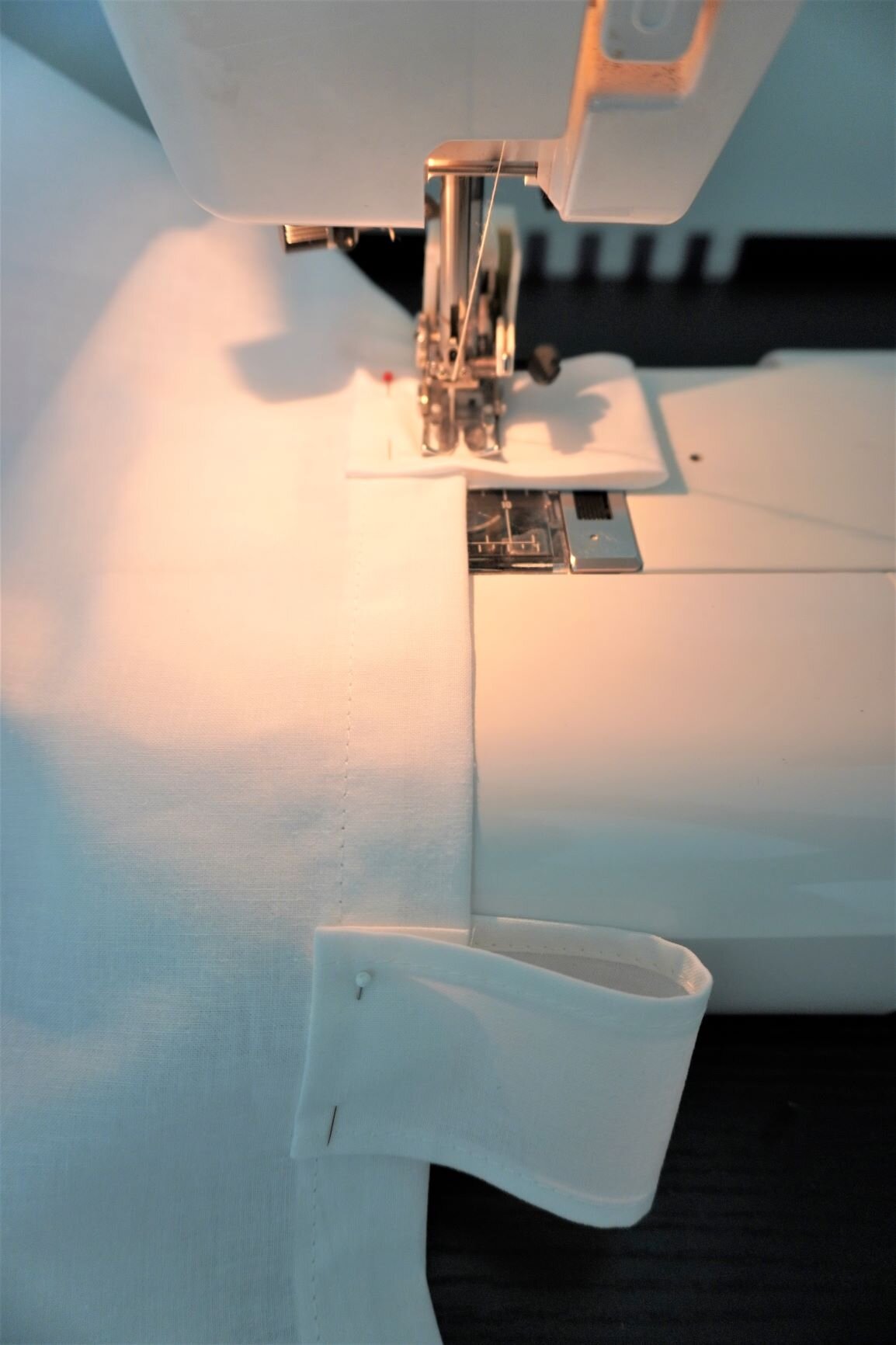
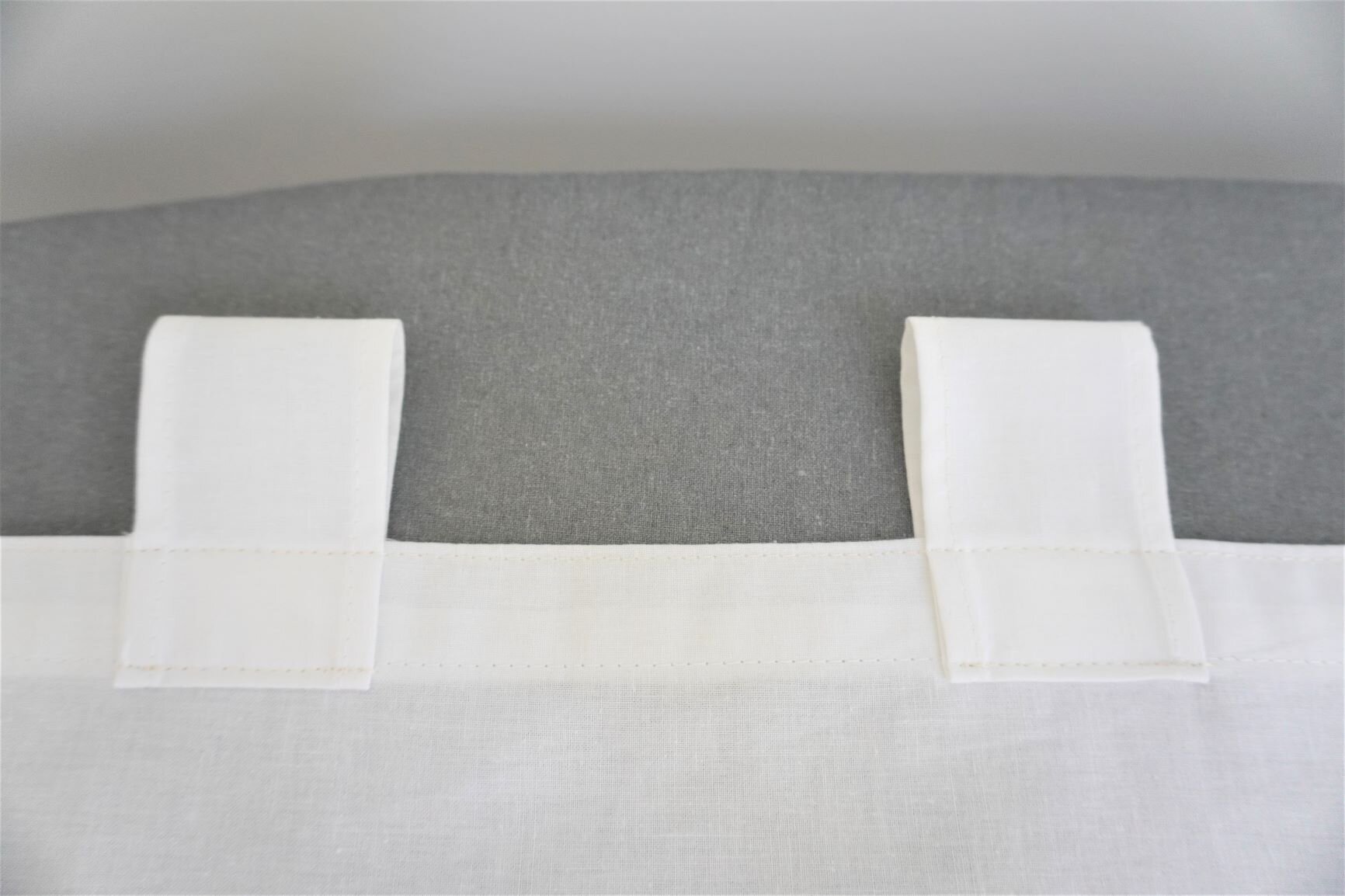
10. Give the curtain panel a nice press and hang up on your curtain rod. Admire the view from your new dressed windows.
The Finished Result
I followed the steps above to make this set of white curtains for my bedroom. I’m very happy with the results — I love how the fabric is semi-sheer and lets some of the sunlight through, and I think the white, floaty fabric makes the room look nice and fresh.
I accidentally measured the length of the curtain incorrectly so these curtains are a bit too short, but I promise that the instructions above are correct and will yield full-length curtains that fall to the floor!
One more thing to note: these curtains are semi-sheer and have a soft hand, but they are not completely sheer and they do not have the gauzy, drapey texture of some of the curtains in the inspo pictures above. To get that kind of look, you need to use a linen or cotton gauze fabric rather than this bleached white cotton muslin. If you know of a source for cheap, gauzy fabric that would make some nice sheer white curtains, please let me know in the comments — I’m on the hunt!

